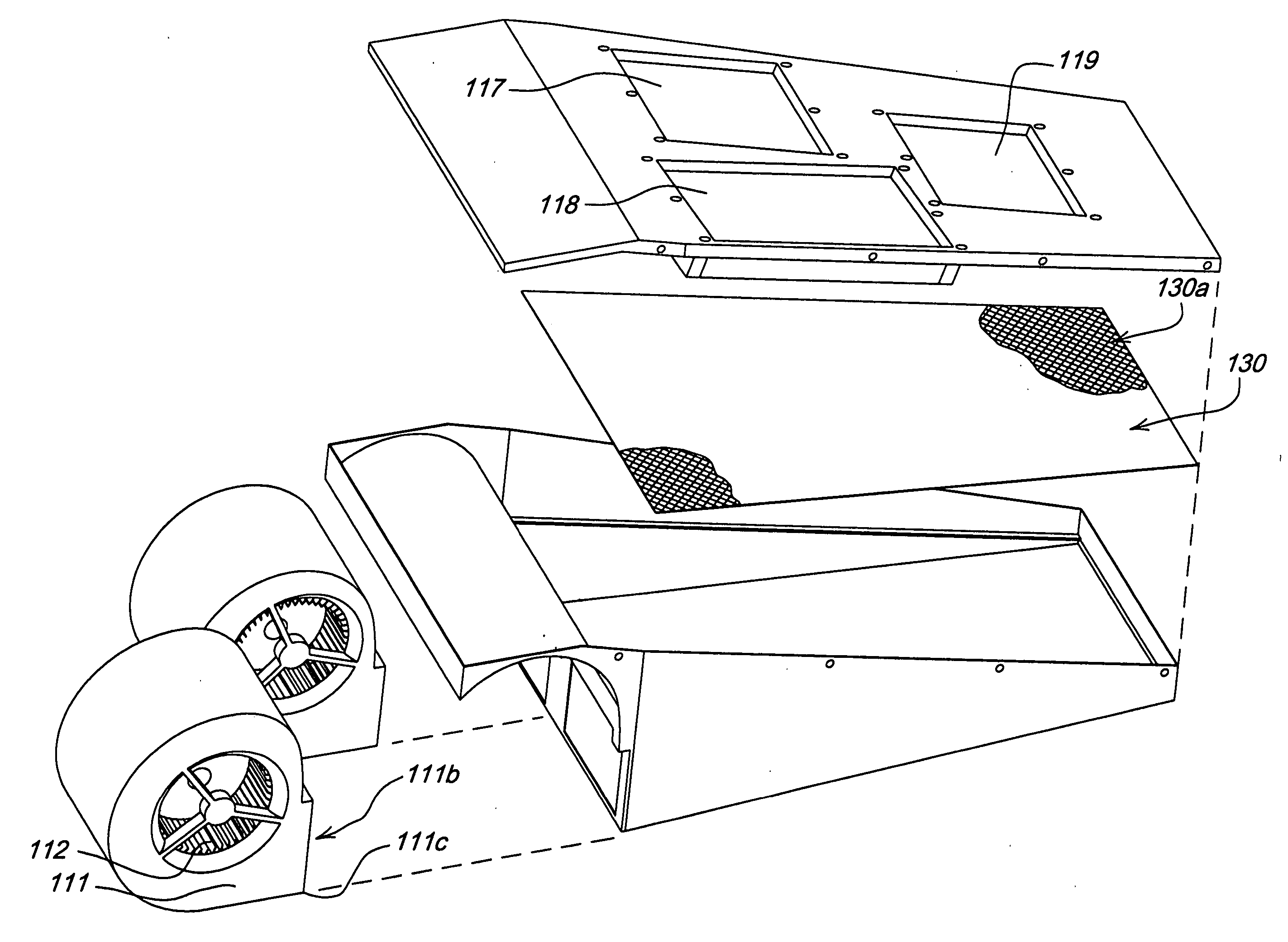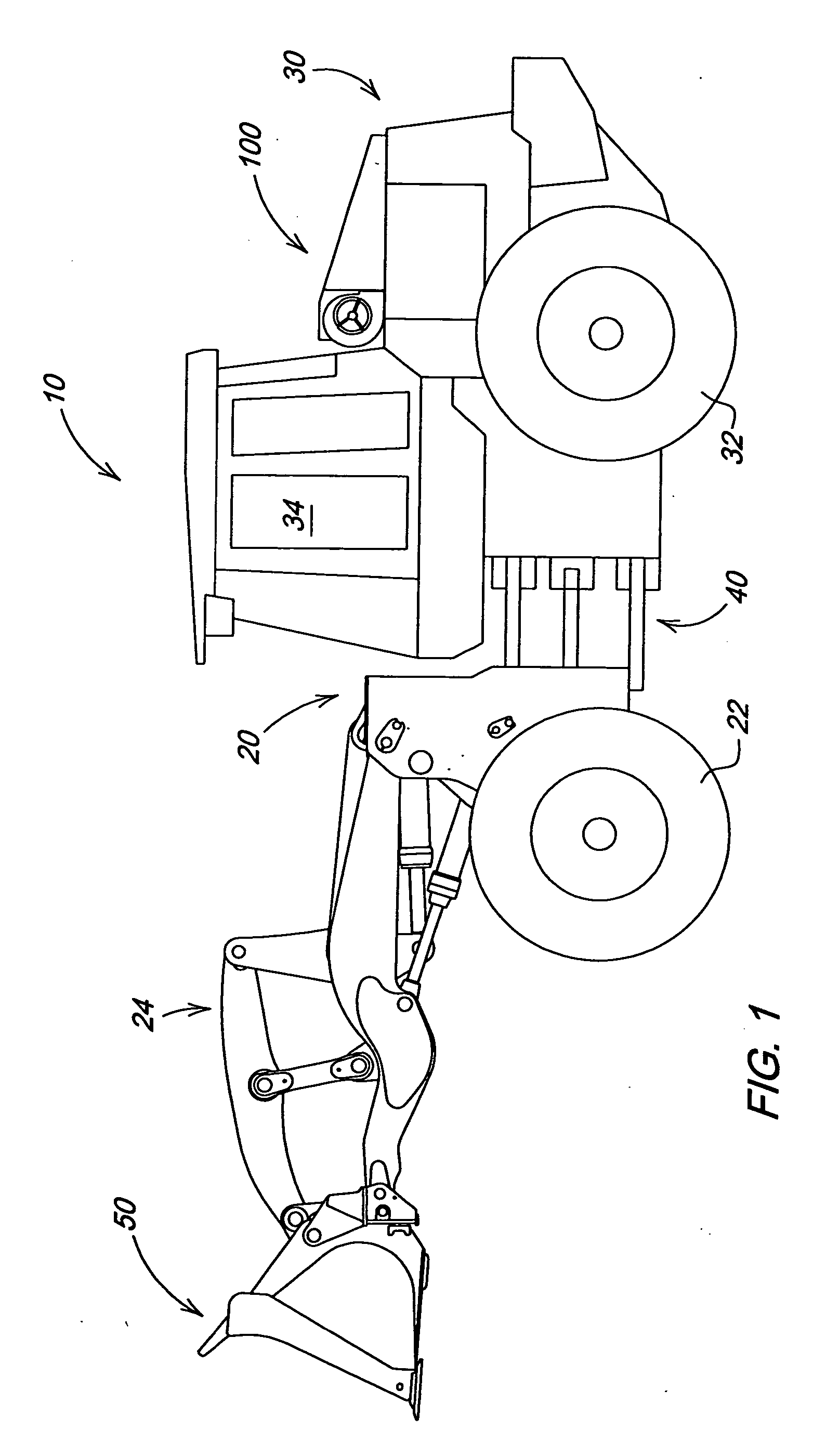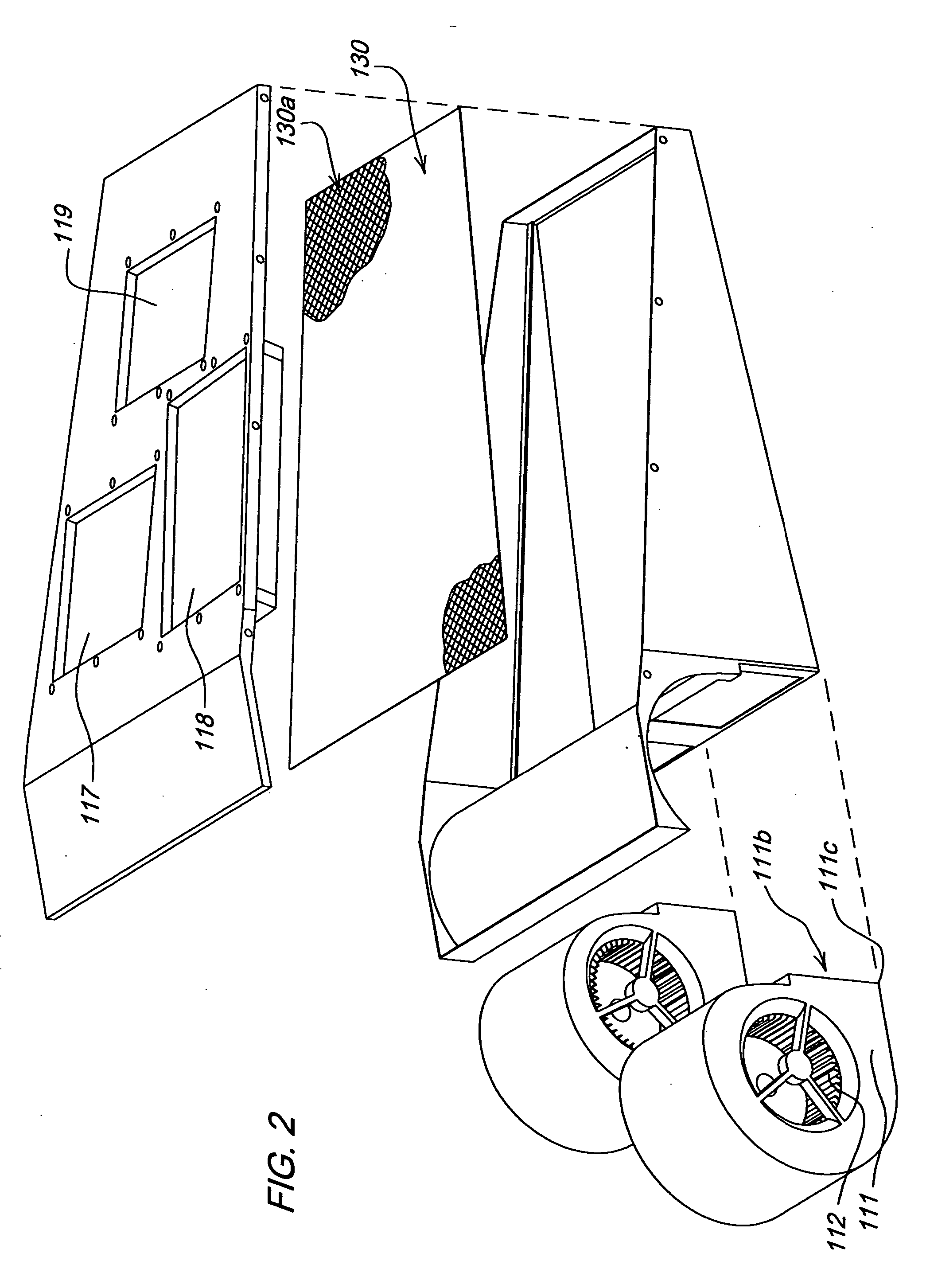Cooling system with active debris separation
a technology of active debris and cooling system, which is applied in the direction of machine/engine, separation process, lighting and heating apparatus, etc., can solve the problems of lower heat transfer efficiency and higher maintenance costs, and achieve the effect of preventing plugging and overheating, reducing efficiency, and low fin coun
- Summary
- Abstract
- Description
- Claims
- Application Information
AI Technical Summary
Benefits of technology
Problems solved by technology
Method used
Image
Examples
Embodiment Construction
[0011]FIG. 1 illustrates a work vehicle in which the invention may be used. The particular work vehicle illustrated in FIG. 1 is an articulated four-wheel-drive motor 1 having a mainframe or body 10 that includes a front frame 20 pivotally connected to a rear frame 30 by vertical pivots 40, the loader being steered by pivoting of the front frame 20 relative to the rear frame 30 by means well known in the art. The front and rear frames 20 and 30 are respectively supported on front drive wheels 22 and rear drive wheels 32. An operator's station is provided on the rear frame 30 and is generally located above the vertical pivots 40. The front and rear drive wheels 22 and 32 propel the vehicle along the ground and are powered in a manner well known in the art.
[0012] Mounted on the front frame 20 is a linkage 24. Operatively attached to the linkage 24 is a work tool or bucket 50.
[0013] Forming a part of the rear portion 30 of the loader 1 is a cooling system 100. As illustrated in FIG. ...
PUM
| Property | Measurement | Unit |
|---|---|---|
| area | aaaaa | aaaaa |
| distance | aaaaa | aaaaa |
| length | aaaaa | aaaaa |
Abstract
Description
Claims
Application Information
 Login to View More
Login to View More - R&D
- Intellectual Property
- Life Sciences
- Materials
- Tech Scout
- Unparalleled Data Quality
- Higher Quality Content
- 60% Fewer Hallucinations
Browse by: Latest US Patents, China's latest patents, Technical Efficacy Thesaurus, Application Domain, Technology Topic, Popular Technical Reports.
© 2025 PatSnap. All rights reserved.Legal|Privacy policy|Modern Slavery Act Transparency Statement|Sitemap|About US| Contact US: help@patsnap.com



